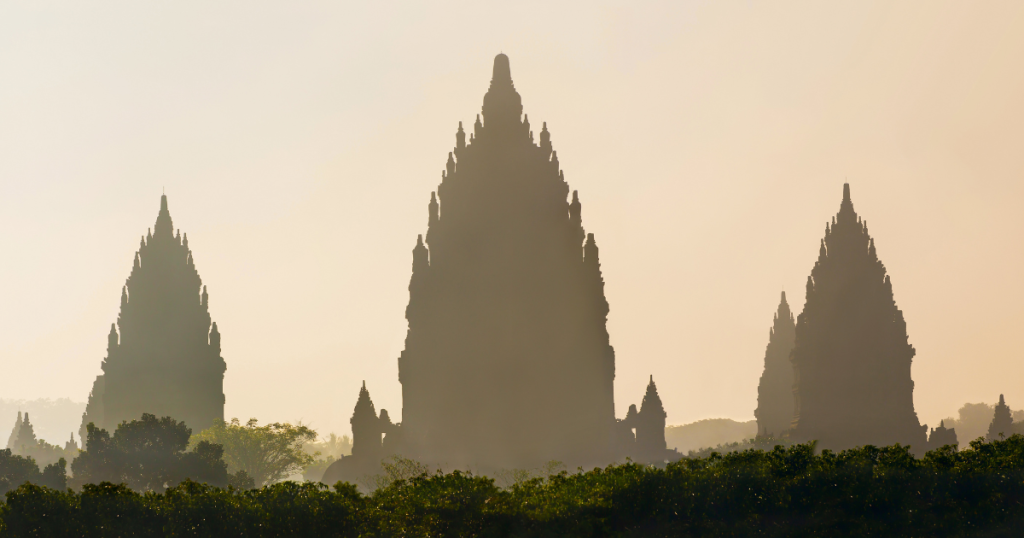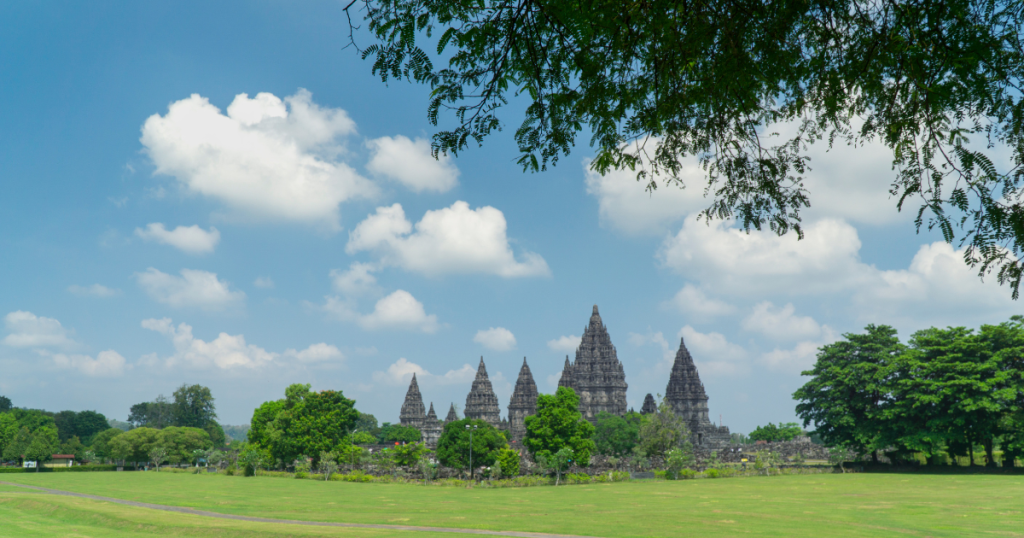Prambanan Temple is a stunning example of ancient Indonesian architecture that’s located in Central Java. It’s been designated as a UNESCO World Heritage Site, and for good reason. The temple complex is not only an impressive architectural feat, but it’s also rich in cultural significance. In this article, we’ll delve into the history, architecture, and cultural importance of Prambanan Temple. We’ll also share tips on how to plan your visit and make the most of your experience.
A Brief History of Prambanan Temple

The Origins of the Prambanan Temple
The temple complex was built in the 9th century during the reign of the Sanjaya dynasty. It’s believed that the original purpose of the temple was to honour the Hindu god Shiva. The Sanjaya dynasty was known for their devotion to Hinduism, and their rulers were patrons of the arts. They oversaw the construction of several religious structures, including the Candi Sewu temple complex.
The Golden Age of Prambanan
The 10th century was a period of prosperity and stability in Central Java. It’s also when Prambanan Temple reached its zenith. The temple complex was expanded and new buildings were added, giving it the impressive form that we see today. At its peak, the complex consisted of over 200 buildings and was the largest temple complex in Indonesia.
During this time, Prambanan Temple was not only a religious centre but also a cultural and educational centre. It was a place where scholars gathered to study and debate, and where artists and craftsmen came to showcase their skills. The temple complex was a hub of activity, with people from all walks of life coming together to celebrate their shared heritage.
The Decline of Prambanan
Despite its grandeur, Prambanan Temple’s glory was short-lived. In the 11th century, the temple was attacked by a neighbouring kingdom and suffered extensive damage. It was never fully restored to its former glory, and over time, it fell into disrepair.
Rediscovery and Restoration Efforts
Over time, Prambanan was abandoned and forgotten. It wasn’t until the early 19th century that the temple was rediscovered by the British. The temple complex was overgrown with vegetation, and many of the buildings had collapsed or were in danger of collapsing.
In the decades that followed, restoration efforts began in earnest. The Indonesian government and UNESCO worked together to preserve the temples and ensure that they were accessible to visitors. The restoration process was a massive undertaking, requiring the expertise of archaeologists, architects, and engineers.
Today, Prambanan Temple is a UNESCO World Heritage Site and a popular tourist destination. Visitors come from all over the world to marvel at the temple’s intricate carvings and towering spires. The temple complex is a testament to the ingenuity and creativity of the people who built it, and a reminder of Indonesia’s rich cultural heritage.
Architectural Marvels of Prambanan Temple

The Main Temple Complex
The main temple complex is the most impressive part of Prambanan. It consists of eight main temples arranged in two concentric squares. The three largest temples are dedicated to the Hindu trinity of Shiva, Vishnu, and Brahma. The other five temples are dedicated to the animals that serve the gods. Each temple is intricately designed and decorated with carvings.
The Perwara Temples
Surrounding the main temple complex are several smaller temples known as perwara. These temples served as a sort of outer sanctum and were used for various purposes such as housing the temple priests or storing offerings. Although smaller in size, the perwara are just as impressive as the main temples. They’re decorated with intricate carvings and sculptures that tell stories from Hindu mythology.
Unique Features and Carvings
One of the most impressive things about Prambanan Temple is the intricate carvings that cover the entire complex. These carvings depict scenes from Hindu mythology, such as the Mahabharata and Ramayana. Visitors can spend hours admiring the details in the carvings. Another unique feature of Prambanan is the statues of the gods that line the inner walls of the temples. These statues are carved from stone or copper and are incredibly lifelike.
The Rich Cultural Significance of Prambanan Temple

The Hindu-Buddhist Connection
Prambanan Temple is a testament to the religious and cultural diversity of Indonesia. The temple complex is a blend of Hindu and Buddhist influences, which was common in ancient Southeast Asia. In fact, many of the carvings and sculptures at Prambanan depict Buddhist themes, despite the complex being dedicated to Hindu deities. This religious fusion is a unique aspect of Indonesian culture.
The Ramayana Ballet Performance
Another way to experience the cultural significance of Prambanan is by attending the Ramayana Ballet performance that takes place within the temple complex. The ballet tells the story of the Ramayana through dance, music, and drama. It’s a once-in-a-lifetime experience that’s not to be missed.
Prambanan’s Role in Modern Indonesian Culture
Prambanan Temple is not just an ancient relic of Indonesia’s past, it’s also a symbol of national pride. The temple complex is featured on the country’s 2000 rupiah banknote, and it’s often used as a backdrop for cultural events and ceremonies. The temple complex is an integral part of Indonesian culture and will continue to be so for generations to come.
Visiting Prambanan Temple
How to Get There
Prambanan Temple is located just 17 kilometres northeast of Yogyakarta. Most visitors opt to take a taxi, but it’s also possible to take a public bus or hire a scooter. If you’re staying in Yogyakarta, your hotel can arrange transportation for you.
Best Time to Visit
The best time to visit Prambanan Temple is early in the morning or late in the afternoon. Not only is the temperature cooler during these times, but the light is also ideal for photography. It’s a good idea to avoid visiting during peak tourist season (June to August) to avoid large crowds.
Tips for a Memorable Experience
Be sure to wear comfortable shoes and clothing, as you’ll be doing a lot of walking. Bring sun protection, as the complex is mostly open to the sun. Consider hiring a guide to explain the significance of the temples and to give you a deeper appreciation for the complex. And finally, take your time. Prambanan Temple is a treasure trove of history, architecture, and culture, and it’s meant to be savoured.
Summing It Up
Prambanan Temple is a true wonder of the ancient world. It’s an architectural marvel that’s rich in cultural significance. It’s a testament to Indonesia’s religious and cultural heritage, and it’s a symbol of national pride. Visiting Prambanan Temple is an experience that shouldn’t be missed, and we hope that this article has given you a glimpse into what makes this temple complex so special.

